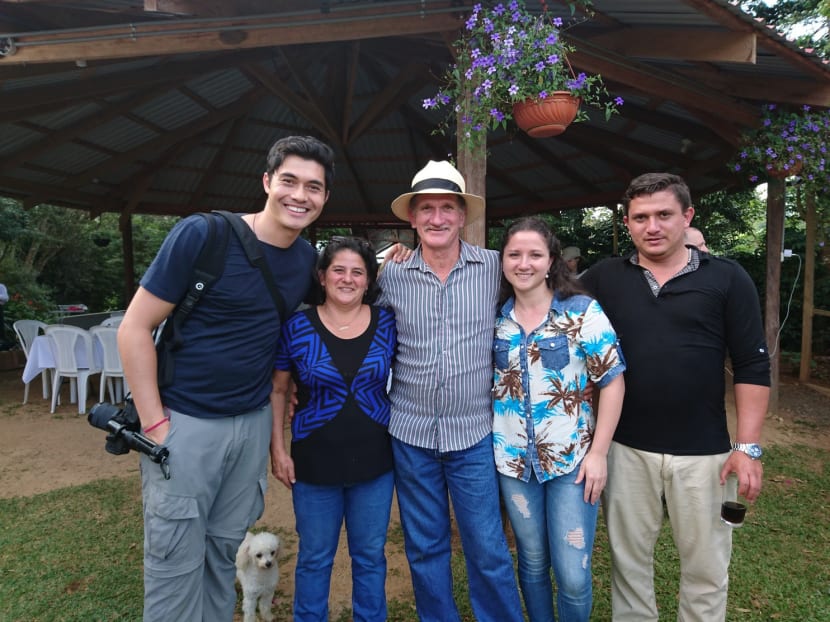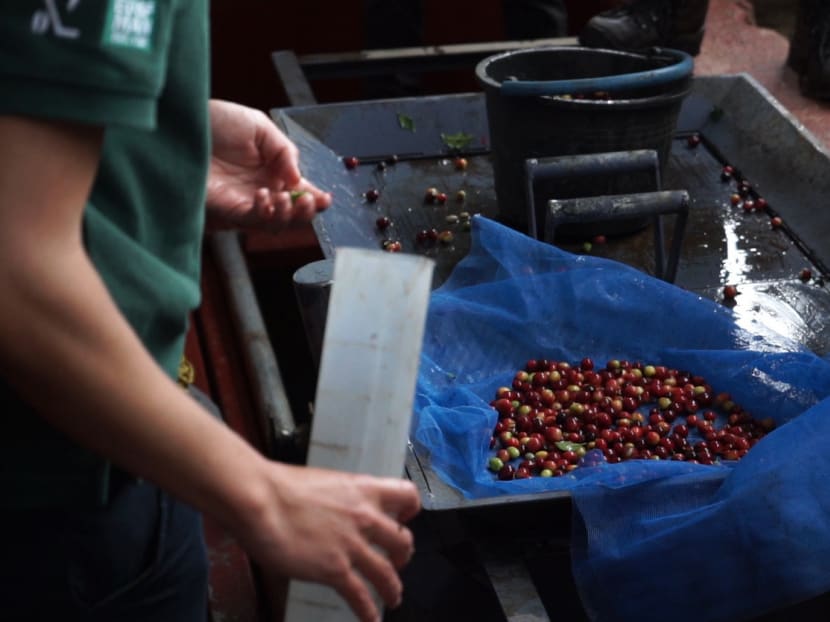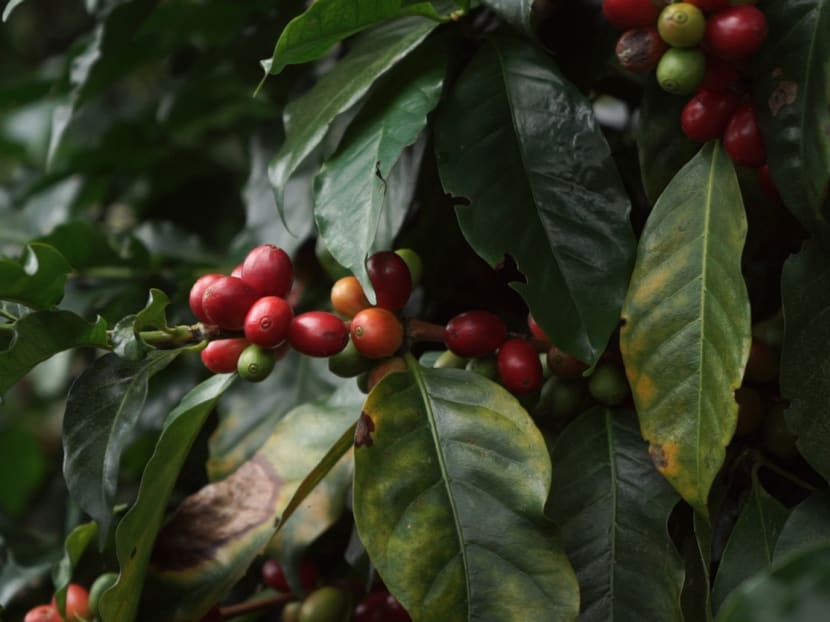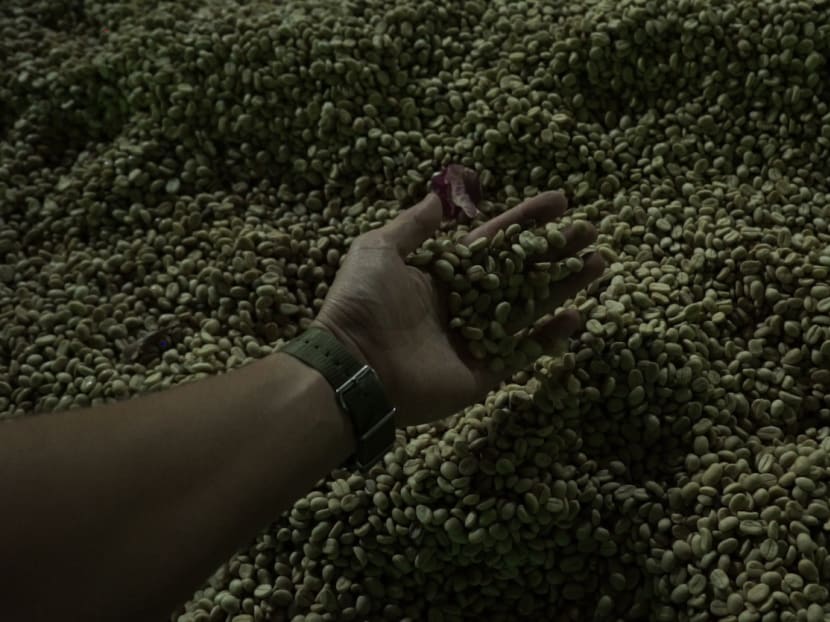What Henry Goulding learnt when he followed the trail of our favourite morning drink - coffee
SINGAPORE — Costa Rica is a stunning country. The sight of its ancient volcanoes majestically framing the horizon is enough to take one’s breath away. But it’s a country that offers something more than just excellent vistas: Its volcanic nutrient-rich soil and the high altitudes are ideally suited to producing some of the world’s best coffee.




SINGAPORE — Costa Rica is a stunning country. The sight of its ancient volcanoes majestically framing the horizon is enough to take one’s breath away. But it’s a country that offers something more than just excellent vistas: Its volcanic nutrient-rich soil and the high altitudes are ideally suited to producing some of the world’s best coffee.
So when a coffee-lover like me was offered a chance to fly down to discover the journey of coffee from bean to cup, it was the perfect place to do so. And there was an added element to the trip. It was also a chance to see how these are grown in an environmentally responsible way.
While I am aware of the discussion about the coffee industry and its impact on the world’s forests and biodiversity, I admit I know far less about it than I should.
At Costa Rica, a glimpse at what goes on behind the Nespresso AAA Sustainable Quality Programme was a proverbial shot of espresso.
Launched in 2003, the coffee-machine company’s programme is done in collaboration with the Rainforest Alliance to help protect the future of the highest quality coffees for consumers, as well as secure livelihoods for the farmers that grow these.
Juan Diego Roman, Nespresso’s Green Coffee Project Manager, explained how its programme supplies farmers with the knowledge and technical assistance from dedicated agronomists and with help from coffee suppliers such as Volcafe.
Among the information farmers get is soil analysis, which allows them to figure out the right amount of fertilisers to be used in their farms (without posing a threat to the local wildlife).
Being in the programme also means adhering to a strict set of criteria for sustainability. This includes considering issues such as crop management, ecosystem conservation, wildlife protection, working conditions and even child labour.
The son of a coffee farmer himself, Roman highlighted the key challenge to implementing the AAA programme is really getting farmers convinced to make the change in their practices.
After all, the global surge in consumer demand has spurred many to abandon time-honoured agricultural practices (which are considered inefficient) for allegedly more effective methods such as producing ‘sun-grown’ coffee, where they are grown in plantations with no forested canopy. To switch once more to sustainable practices is not easy, but the farmers all say that the approach has changed their lives for the better.
All this means that investing in sustainable coffee practices is just the tip of the programme’s iceberg — it’s not just about the coffee but the farmers, too.
The AAA Sustainable Quality Programme also offers a holistic chain of support, training, financing and technical assistance to farmers.
Nespresso pays a premium for quality and awards bursaries for farmers, which incentivises them to adopt and implement best practices. Mind you, this is not a charitable initiative but one that seeks to create real and lasting value by motivating farmers to see beyond revenue and coffee prices, to a more balanced approach that can increase their income in a sustainable way.
These farmers are free to sell their harvest to any companies, but the fact that farmers have consistently supplied their top quality coffee to Nespresso show the trust and loyalty towards the programme and its commercial viability.
So with the farmers taken good care of, what of the crop? When I did my own cherry-picking, the cherries I saw were an unexpected vibrant red — which is supposed to be top notch. Nespresso only chooses those that are big, red and of a certain size and weight, which can only be identified if they’re painstakingly hand-picked.
Once the cherries are transported to Volcafe’s collection point, the first of many checks are undertaken. A sample batch of cherries is inspected to see how much floats to the top — an indication that these are “bad”. After this, an average is worked out for the entire delivery and the farmer’s fee gets calculated.
The cherries are then transported by the truckload to one of Volcafe’s wet mills for the green beans to be extracted. They are then sun-dried (after the flesh and pulp are removed). Inside a greenhouse the size of three football pitches, the beans are laid out for further drying.
There are farms, of course, that aren’t part of the AAA programme, and the difference is obvious. These farms do not usually take care of soil cover and instead depend heavily on pesticides when growing their coffee.
In comparison, at farmer Tomas Gutierrez’s AAA farm, for instance, the temperature felt significantly lower and there was more vegetative cover as well as shady trees — definitely a much more conducive environment for coffee to grow in.
At yet another farm, we met up with Don Edgar, who served as an example of how the programme has helped improve the livelihood of a typical farmer and his family. Walking around his little oasis up in the mountains was such a pleasure — he had fruit trees galore, ranging from grapefruits to sweet limes. In an otherwise challenging industry, it looks like he has managed to prosper.
And as our guest shared his personal success story, I couldn’t help but think that even when it comes to things we don’t think twice about — having a cup of coffee — making informed choices to support a more sustainable lifestyle is still rather important. After all, if you take care of nature; nature will take care of you.





